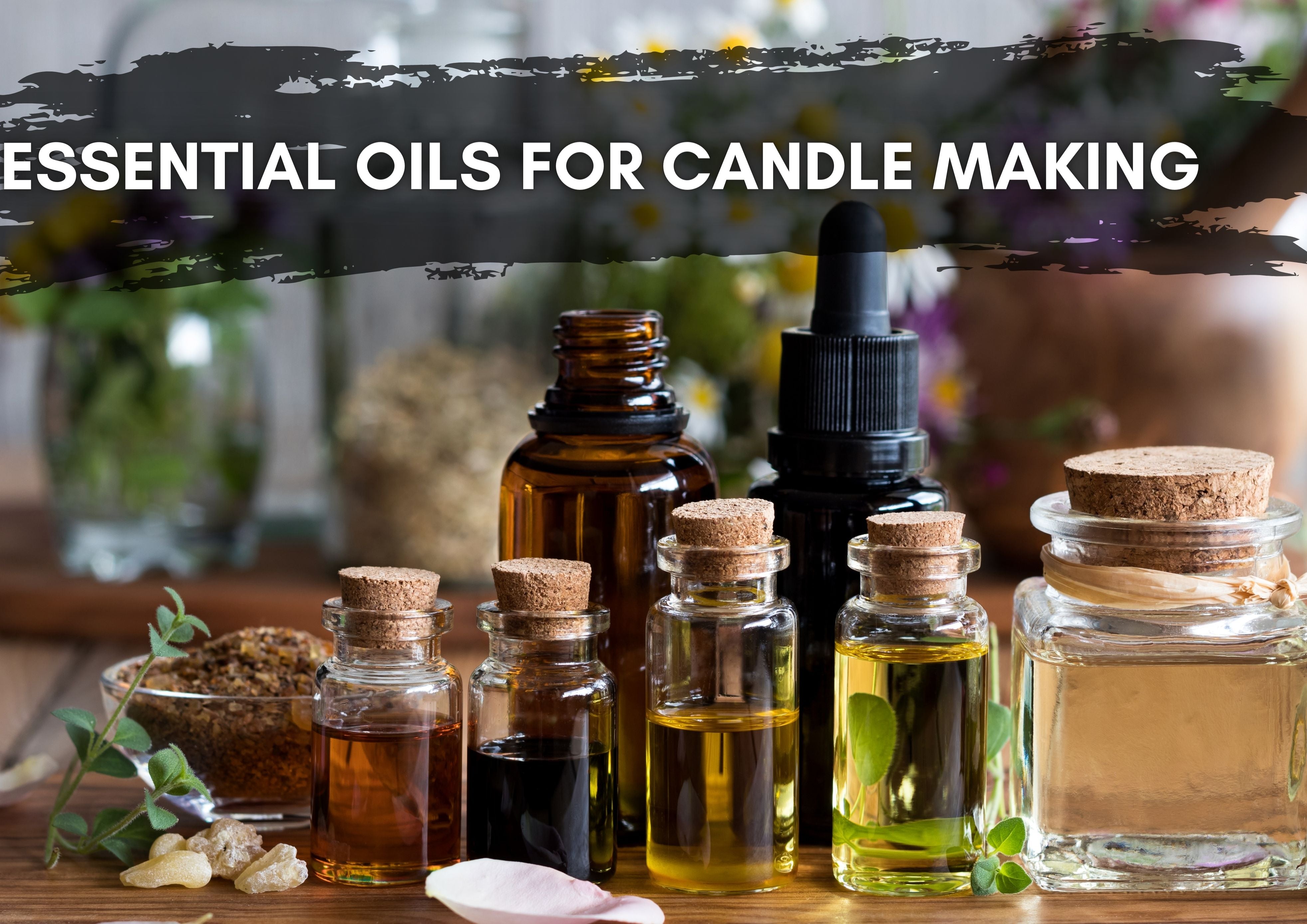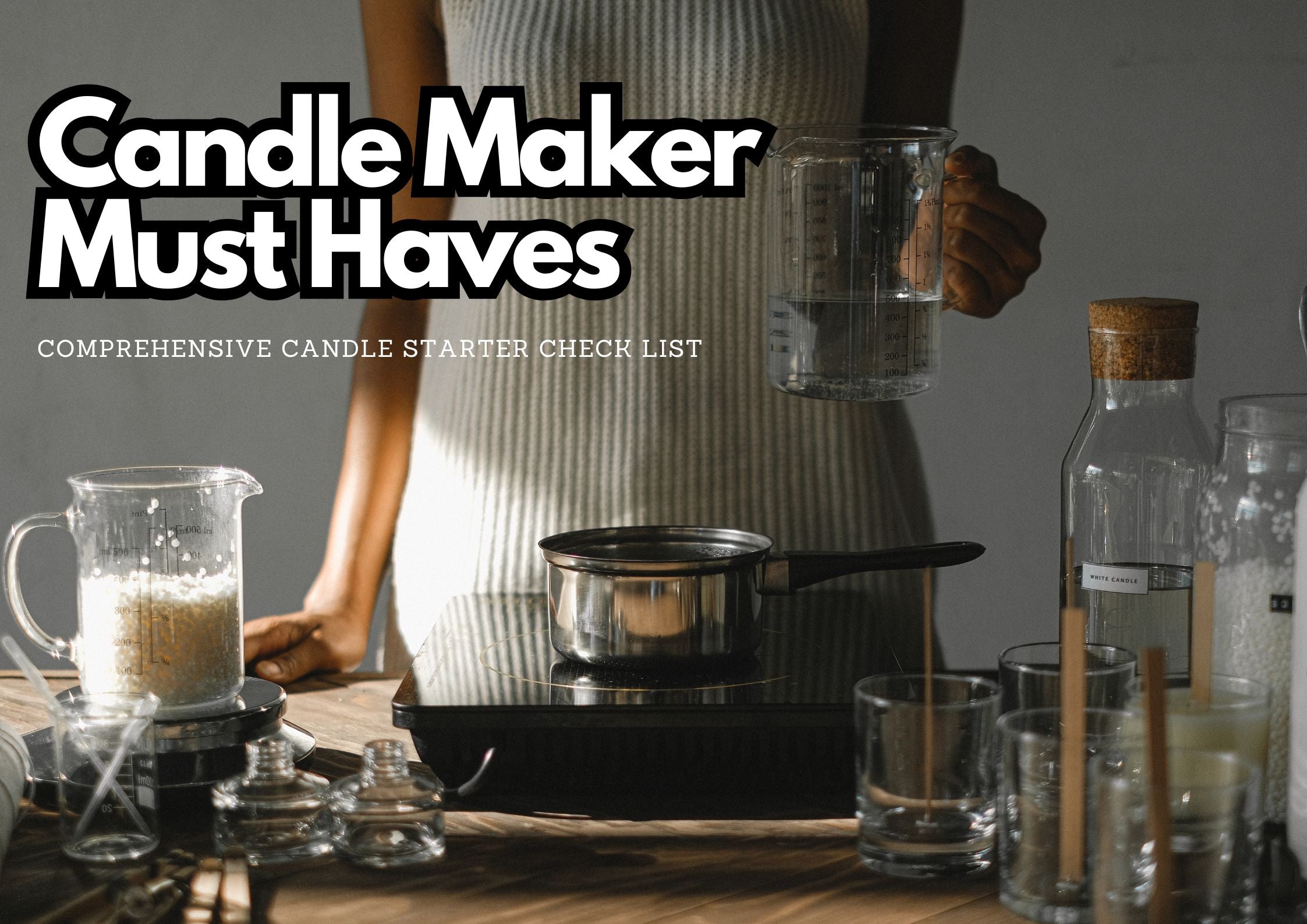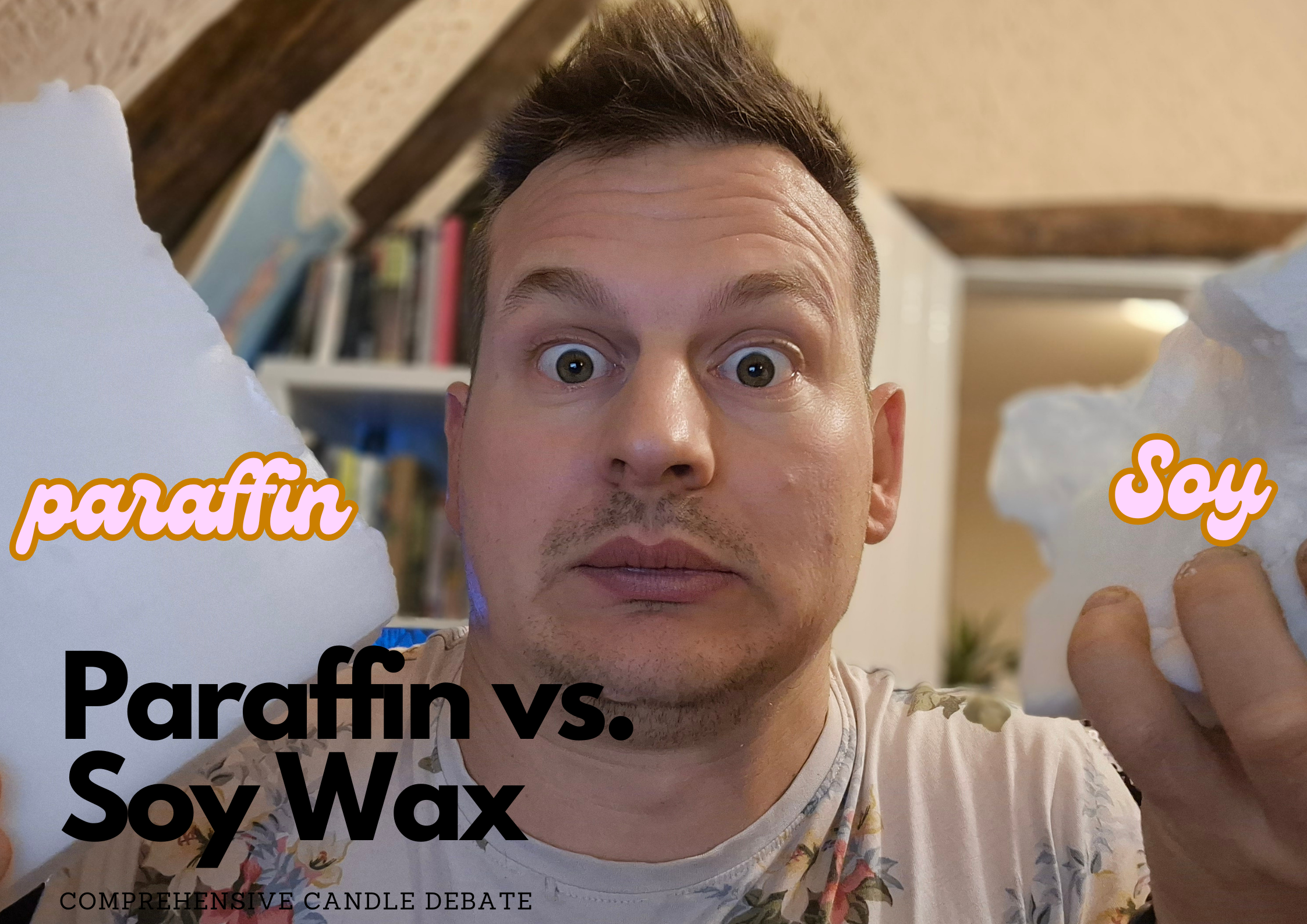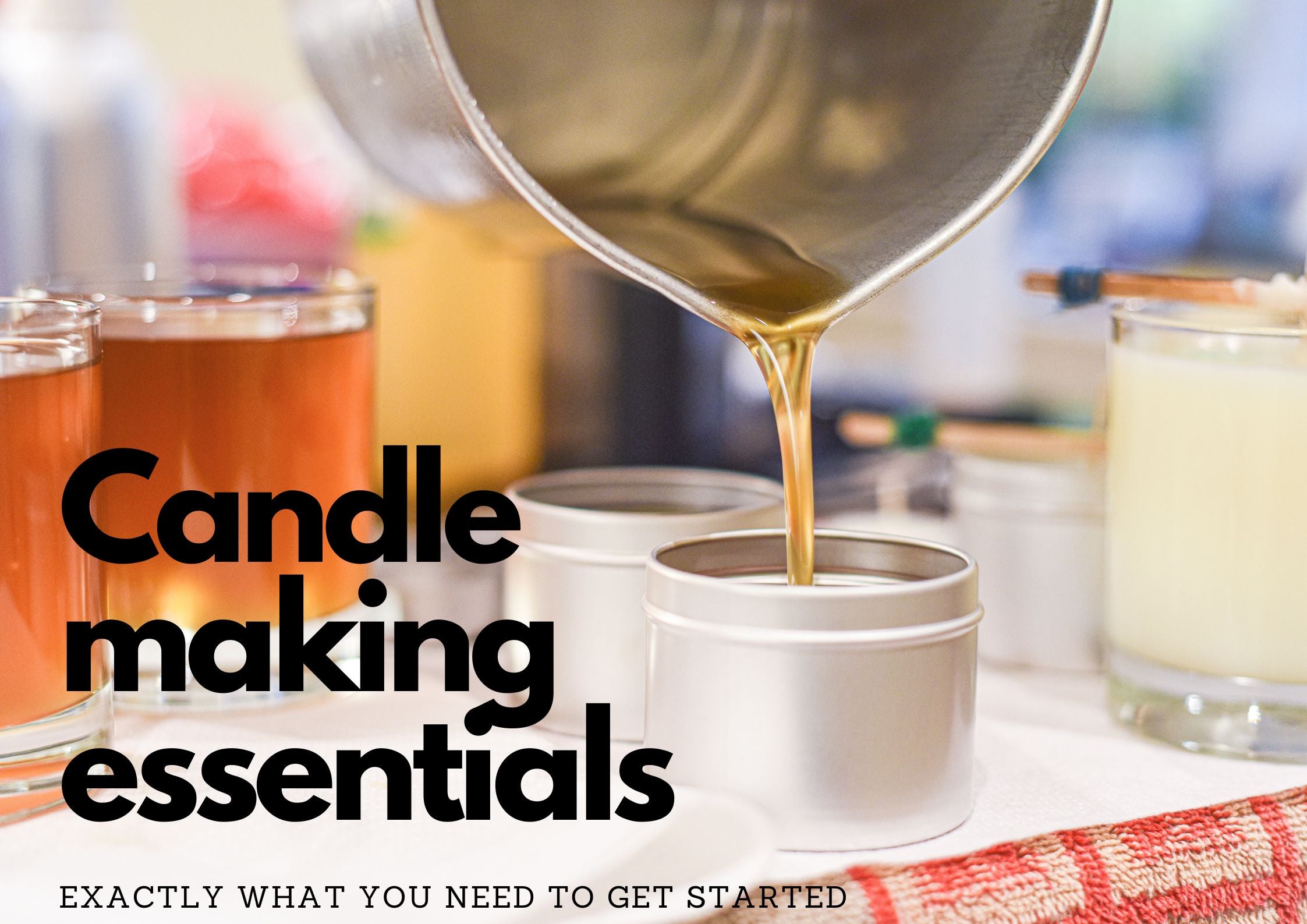Essential oils for candle making
Sep 07 , 2023
The allure of candles lies not only in their soft, flickering glow but also in the captivating scents that fill the room as they burn. Essential oils have become a popular choice for enhancing the aroma of candles, providing a natural and therapeutic experience. In this comprehensive guide, we will delve into the world of essential oils for candles, exploring their pros and cons, highlighting common pitfalls, and revealing some delightful essential oil blends that will elevate your candle-making game.
The Pros of Using Essential Oils in Candles
1. Natural Fragrance
One of the most significant advantages of using essential oils is their natural origin. Unlike synthetic fragrances, essential oils are derived from plants, offering a pure and authentic aroma that can promote relaxation, focus, or upliftment depending on the oil chosen.
2. Therapeutic Benefits
Many essential oils possess therapeutic properties that can enhance your well-being. For example, lavender essential oil is known for its calming effects, while peppermint can invigorate and boost concentration. Incorporating these oils into your candles can infuse your space with these therapeutic benefits.
3. Customization
Essential oils provide a wide range of fragrance options, allowing you to customize your candles to suit your preferences or the mood you want to create in your space. From citrusy and fresh to warm and spicy, there's an essential oil for every desired scent.
4. Minimal Environmental Impact
Using essential oils aligns with eco-friendly practices, as they are natural and sustainable resources. This choice not only benefits your health but also reduces the environmental impact of synthetic fragrance production.
The Cons of Using Essential Oils in Candles
1. Intensity Variation
One drawback of essential oils is that their intensity can vary. The strength of the scent may depend on factors such as the quality of the oil, the type of plant it comes from, and its extraction method. Achieving consistent fragrance levels can be challenging.
2. Evaporation and Volatility
Essential oils are volatile compounds that can evaporate relatively quickly when exposed to heat. This means that the scent of your candles may diminish over time, especially if they are stored for extended periods.
3. Cost
High-quality essential oils can be relatively expensive. When using them in candle making, the cost of essential oils can significantly impact the overall cost of your candles. Finding a balance between quality and affordability is essential.
4. Limited Blending Options
While essential oils offer a wide range of single scents, blending them to create complex fragrances can be challenging. Some oils may not blend well with others, leading to unexpected and unpleasant combinations.
Common Pitfalls to Avoid

1. Overloading Candles
One common mistake is adding too much essential oil to your candle wax. Excessive oil can interfere with the candle's combustion, causing issues like a smoky flame, soot build up, and even dangerous flaring. Always follow recommended guidelines for the amount of oil to use.
2. Ignoring Flash Points
Each essential oil has a flash point, which is the temperature at which it can ignite when exposed to an open flame. Failing to consider the flash point of the oils you use can lead to safety hazards. Ensure that the oils you select are safe for candle making.
3. Skipping Testing
Not all essential oils are created equal, and their scent and performance in candles can vary widely. It's essential to test different oils and blends before creating a large batch of candles to ensure you achieve the desired fragrance and burn characteristics.
4. Neglecting Wick Selection
The choice of wick plays a crucial role in how your candle burns and distributes fragrance. Different wicks are suitable for various candle sizes and wax types. Research and select the appropriate wick to optimize your candles.
Perfect Essential Oil Blends for Candles
Creating delightful and harmonious essential oil blends can elevate your candle-making experience. Here are some tried-and-tested blends to inspire you:
1. Calming and Relaxing Blend
- Lavender: 4 drops
- Chamomile: 3 drops
- Cedarwood: 2 drops
This blend is perfect for winding down after a long day or creating a tranquil atmosphere for meditation and relaxation.
2. Energizing and Uplifting Blend
- Peppermint: 4 drops
- Orange: 3 drops
- Lemon: 3 drops
This invigorating blend is ideal for boosting focus and motivation, making it a great choice for your workspace or morning routine.
3. Cozy and Warm Blend
- Cinnamon: 2 drops
- Vanilla: 2 drops
- Clove: 1 drop
This blend evokes the feeling of a warm and cozy home, perfect for setting a comforting ambiance during cold winter nights.
4. Refreshing and Clean Blend
- Eucalyptus: 3 drops
- Tea Tree: 2 drops
- Lemon: 2 drops
Use this blend to purify the air and create a refreshing atmosphere in your living space.
Conclusion
Essential oils offer a natural and therapeutic way to enhance the fragrance of your candles, adding a personal touch to your creations. While they come with both pros and cons, the benefits of using essential oils often outweigh the drawbacks. To create the perfect scented candles, remember to experiment with different oils, test your blends, and consider safety measures to ensure a delightful and safe candle-burning experience. Whether you seek relaxation, inspiration, or comfort, essential oil-infused candles can provide a sensory journey that enhances your space and elevates your mood.
Frequently Asked Questions (FAQ) - Essential Oils for Candles

Q1: Can I use any essential oil in candle making?
A1: While many essential oils can be used in candle making, it's essential to consider factors such as the oil's flash point, scent strength, and suitability for candle making. Some oils may not perform well in candles or may pose safety hazards, so it's crucial to choose oils specifically intended for this purpose.
Q2: How do I determine the right amount of essential oil to use in my candles?
A2: The amount of essential oil to use depends on various factors, including the type of wax, the size of the candle, and the desired fragrance strength. It's best to follow guidelines provided by reputable candle-making suppliers or perform small test batches to determine the optimal amount for your specific recipe.
Q3: Can I mix different essential oils to create custom scents for my candles?
A3: Yes, you can mix different essential oils to create unique and personalized scents for your candles. However, it's essential to test these blends in small quantities to ensure that the resulting fragrance is pleasant and well-balanced. Not all essential oils blend harmoniously, so experimentation is key.
Q4: Are there any safety precautions I should take when using essential oils in candles?
A4: Yes, safety is paramount. Always consider the flash point of the essential oils you use, as some oils can ignite when exposed to an open flame. Additionally, ensure proper ventilation when working with essential oils to avoid inhaling concentrated fumes. Keep essential oils out of reach of children and pets, and follow candle-making safety guidelines.
Q5: Can I add essential oils to any type of candle wax?
A5: Essential oils can generally be added to most candle wax types, including soy, paraffin, and beeswax. However, different waxes may require different fragrance load capacities, so it's essential to check the recommendations provided by your wax supplier or conduct testing to determine the suitable fragrance level.
Q6: Will the scent of my candles diminish over time when using essential oils?
A6: Essential oils are volatile compounds, which means they can evaporate relatively quickly when exposed to heat. As a result, the scent of your candles may diminish over time, especially if they are stored for extended periods. To help preserve the fragrance, store your candles in a cool, dark place away from direct sunlight and extreme temperature fluctuations.
Q7: Can I use essential oils in gel candles?
A7: While it's possible to use essential oils in gel candles, it can be more challenging than in other types of candles. Gel candles require special considerations because they have a lower fragrance capacity and can be more sensitive to certain oils. It's advisable to consult with gel candle-making experts or conduct small-scale tests to find suitable essential oils for your gel candle projects.
Q8: Are there any essential oils that should be avoided in candles?
A8: Some essential oils, such as those with extremely low flash points, may not be suitable for candle making due to safety concerns. Oils that are known to have sensitizing or irritating properties when applied to the skin may also not be ideal for candle use, especially if the candle emits a strong aroma that could be inhaled. Always research and select oils that are safe for candle making.
Q9: Can I use fragrance oils instead of essential oils in my candles?
A9: Yes, you can use fragrance oils in candle making as an alternative to essential oils. Fragrance oils are specifically formulated for candle making and often offer a wider range of scents and better scent retention in candles compared to essential oils. However, if you prefer natural and therapeutic scents, essential oils may be your preferred choice.
Q10: How do I prevent my candles from having an overpowering or unpleasant scent?
A10: Achieving the perfect scent balance in your candles can be challenging. To avoid overpowering or unpleasant fragrances, start by using essential oils sparingly and gradually increase the amount until you achieve the desired strength. Additionally, consider blending oils thoughtfully, as some combinations can create unpleasant results. Conduct small tests to refine your candle-making recipes.
Remember that safety, experimentation, and careful consideration of essential oil choices are essential when incorporating them into your candle-making projects. Enjoy the journey of creating unique, fragrant candles that enhance your space and mood.





